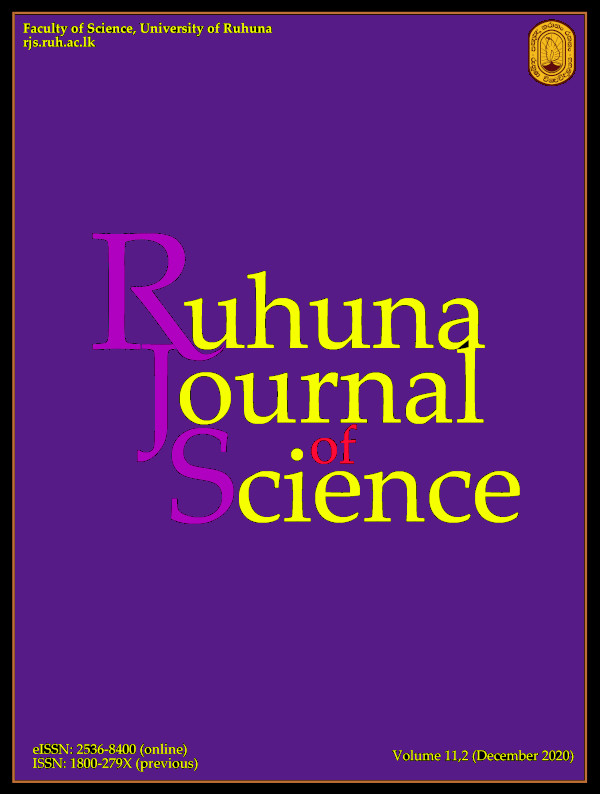Modelling non-life insurance in Sri Lanka using Cox Hazard Model and classification of risky customers
Abstract
Some of the major factors that help the decision-making process of an insurance company include Time of the first claim (TFC), claim Size and the frequency of claims. However, in most situations researchers focus mainly on the second and third factors mentioned above. We hypothesize the importance of the TFC of an insurance contract in the decision-making process. Empirical evidence of motor vehicle insurance data in Sri Lanka suggests that nine covariates are responsible for the claim sizes. In the current study, our main objective is to find the key factors of those nine that are responsible for the TFC of the insurance contract. This study is based on the claim data in the whole year of 2016 of non-life insurance policies of a particular insurance company in Sri Lanka. Considering the TFC as right-censored data, selected nonparametric methods, i.e., Kaplan-Meier, Nelson-Aalen estimators, and Cox Proportional Hazard Model are used to analyze the data. We identified the five most influential covariates namely, vehicle type, log of Premium Value and that of Assured Sum, the lease type and the age range via fitting the Cox Model to TFC data. After a thorough residual analysis, the Logistic regression model has been used to identify the important covariates to classify future customers as risky or not. Key words: Classification, Cox Proportional Hazard model, Kaplan-Meier, Right-censoredReferences
Oulidi A, Marion J-M, Ganachaud H. 2010. Survival analysis methods in insurance applications in car insurance contracts. (accessed at https://studylib.net/doc/8687251/survival-analysis-methods-in-insurance-applications-in-car) (published online).
Cox DR. 1972. Regression models and life-tables. Journal of Royal Statistical Society B 34: 187-200.
De Mel Withanage Ajith Raveendra. 2014. On some inferential problems with recurrent event models. Doctoral Dissertation, Missouri University of Science and Technology (accessed at http://scholarmine.mst.edu/doctoraldissertations/2340.
Anna E. 2017. Variable selection for the Cox proportional hazards model. Master thesis. UMEA University (accessed at http://www.divaportal.org/smash/get/diva2:1067479/FULLTEXT01.pdf).
Fleming, Thomas R, and Harrington, David F. 1991. Counting processes and Survival Analysis. John Wiley & Sons Inc, New York.
Kaplan EL, Meier P. 1958. Nonparametric estimation from incomplete observations. Journal of the American Statistical Association 153 (282): 457-481.
Montgomery DC, Peck EA, Vining GG. 2006. Introduction to linear regression analysis, fourth edition. John Wiley & Sons Inc, New York.
Nelson W. 1972. Theory and application of hazard plotting for censored failure data. Technometrics 14: 945-966.
Terry MT, Patricia MG. 1990. Statistics for Biology and Health. New York: Springer Verlag.
Downloads
Published
Issue
Section
License
From Volume 7 (2016) onwards, all articles published in Ruhuna Journal of Science are Open Access articles published under the Creative Commons CC BY-NC 4.0 International License. This License permits use, distribution and reproduction in any medium, provided the original work is properly cited and is not used for commercial purposes.
Copyright on any research article published in RJS is retained by the respective author(s).
Authors who publish with this journal agree to the following terms:
a) Authors retain copyright and grant the journal right of first publication with the work simultaneously licensed under a Creative Commons Attribution License CC-BY-NC 4.0 International, that allows others to share the work with an acknowledgement of the work's authorship and initial publication in this journal.
b) Authors are able to enter into separate, additional contractual arrangements for the non-exclusive distribution of the journal's published version of the work (e.g., post it to an institutional repository or publish it in a book), with an acknowledgement of its initial publication in this journal.
c) Authors are permitted and encouraged to post their work online (e.g., in institutional repositories or on their website) prior to and during the submission process, as it can lead to productive exchanges, as well as earlier and greater citation of published work (See The Effect of Open Access).

